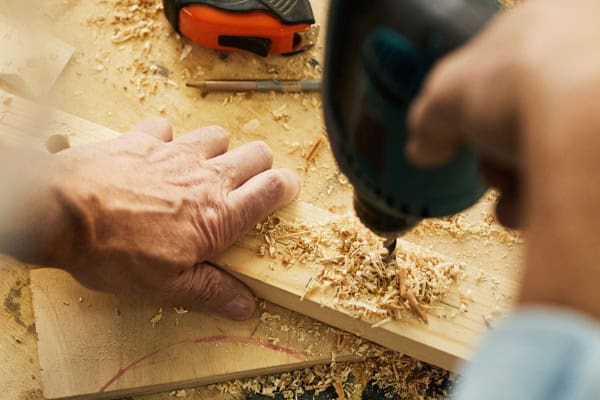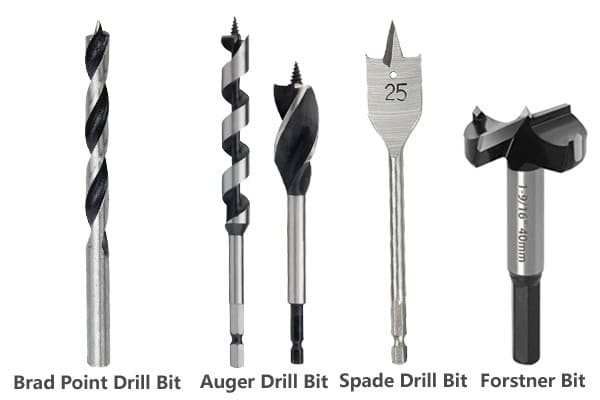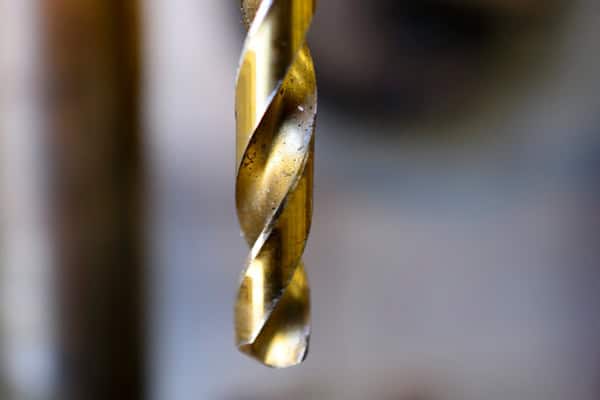Are you tired of drill bits that break easily or don’t deliver clean cuts? It’s time to choose wisely.
When sourcing woodworking drill bits, understanding key factors can save you from project setbacks. It is important to consider drill bit types1, design features, range, and customization options2 to ensure you get the best value and performance. The main types—brad point, spade, auger, and Forstner—are typically made from carbon steel.

Let’s explore what you should know to make informed decisions and get the best woodworking drill bits for your needs.
Choose the Right Drill Bit Type for Your Woodworking Needs
Do you know which drill bit is best for creating clean, precise holes in wood? Selecting the correct drill bit is crucial for achieving precision, efficiency, and a high-quality finish in woodworking projects.
Different drill bits, usually made from carbon steel, are designed for specific tasks. Knowing their applications can significantly enhance your projects. Let’s dive into some common types:
Brad-Point Drill Bits
These bits have a sharp point with spurs3 on the cutting edges, making them ideal for boring precise, clean holes. The central brad helps position the bit accurately, while the wide flutes4 efficiently remove wood chips. I’ve found these bits particularly useful when installing cabinet doors, as they ensure a clean exit point.
Spade Drill Bits
Also known as paddle bits, spade drill bits5 are perfect for drilling large-diameter holes6 quickly. They have a flat blade with a sharp center point, which helps position the bit accurately and minimizes tear-out. Electricians often use these to run cables, and I’ve found them invaluable for creating large holes efficiently.

Auger Drill Bits
Auger bits7 are designed for drilling deep, wide holes. The deep spiral flute is very effective at removing chips. These are commonly used in a brace hand drill for wider and deeper holes.
Brocas Forstner
pedacitos Forstner8 create flat-bottomed holes9 with smooth sides, even when cutting through the edge of a material. These bits only cut wood and leave a flat bottom.
To choose the right drill bit, consider the following table:
| Drill Bit Type | Best For | Características | Material |
|---|---|---|---|
| Brad-Point | Precise, clean holes | Sharp point, spurs for clean cuts, wide flutes for chip removal | Acero carbono |
| Spade | Large-diameter holes | Flat blade, sharp center point to minimize tear-out | Acero carbono |
| Auger | Deep, wide holes | Deep spiral flute for effective chip removal | Acero carbono |
| Forstner | Flat-bottomed holes | Smooth sides, even when cutting through edges | Acero carbono |
Evaluate the Design Features that Impact Drilling Performance
What makes one drill bit perform better than another? The design features of a drill bit significantly affect its drilling performance, influencing speed, accuracy, and durability.

Several design elements contribute to a drill bit’s effectiveness:
Cutting Edges
The sharpness and design of the cutting edges determine how efficiently the bit removes material. For instance, bits with ridged-shaped cutting elements can help build sharper curves in horizontal wellbores.
Flute Design
The flutes are the grooves that wrap around the bit and channel away chips and dust. Wider flutes10 remove more material, preventing clogging and reducing heat. The design of the flute promotes excellent chip flow and decreases cutting friction11.
Point Geometry
The point of the drill bit makes initial contact with the material. A brad point helps position the bit precisely, while other designs are better suited for different materials. Wood bits tend to have a sharp point at the end to keep the bit in position when starting off drilling.
Material and Coating
The material and any coatings affect the bit’s hardness, heat resistance, and lifespan. Since wood drill bits are made from carbon steel, the quality of the steel and any coatings applied are crucial. Coatings like titanium nitride extend tool life.
Drill Bit Composition
- Carbon Steel: The primary material for wood drill bits, offering a good balance of hardness and durability for woodworking applications.
Considering these features can greatly improve drilling outcomes. The table below shows how each feature impacts performance:
| Design Feature | Impact on Performance | Example |
|---|---|---|
| Cutting Edges | Determines cutting efficiency and curve building | Ridged-shaped cutting elements for sharper curves |
| Flute Design | Affects chip removal, heat reduction, and clogging prevention | Wider flutes for efficient material removal |
| Point Geometry | Influences initial contact and positioning | Brad point for precise positioning |
| Material/Coating | Affects hardness, heat resistance, and lifespan | Carbon steel for wood, titanium nitride for extended life |
Check if the Supplier Offers a Full Range of Wood Drill Bits
Does your supplier have all the drill bits you need for different woodworking projects? A comprehensive supplier should offer a wide variety of drill bits to accommodate various woodworking needs.

A full range of wood drill bits includes:
- Different Types: Brad-point, spade, Forstner, auger, and more.
- Various Sizes: Different diameters and lengths to suit diverse applications.
- Specialty Bits: Hole saws, countersink bits, and plug cutters for specific tasks.
- Material Options: Carbon steel bits with various coatings for enhanced durability.
Having access to a comprehensive range ensures you can find the right bit for any project. I remember one instance where a project was delayed because I had to source a specific type of drill bit from a different supplier.
Here’s a checklist to ensure your supplier offers a complete range:
| Category | Considerations |
|---|---|
| Drill Bit Types | Includes brad-point, spade, Forstner, auger, etc. |
| Size Variety | Offers different diameters and lengths |
| Specialty Bits | Provides hole saws, countersink bits, plug cutters |
| Material Options | Includes carbon steel bits with various coatings |
| Drill Bit Sets | Offers sets with multi size drill bits |
Confirm Customization Capabilities for Branding or Packaging
Can the supplier customize drill bits or packaging to fit your brand? Customization options can add significant value, especially for branding and marketing purposes.

Branding
Suppliers might offer logo printing12 or custom colors13 on the drill bits themselves. Custom art is also available on drill bit sets. This helps reinforce your brand identity and makes your products stand out. I’ve seen this work wonders for brand recognition14 at trade shows.
Packaging
Custom packaging can enhance product presentation and protection. Options include custom-printed boxes, plastic tubes, and cases. This protects the cutting edges of drill bits during transport. Look for suppliers who can create packaging solutions tailored to your specific needs.
Customization Options
- Sizes: Custom sizes can be made.
- Colors: Custom colors can be applied.
- Printing: Printing onto the drill bit or packaging can be done.
- Shapes: Custom shapes can be created.
Customization not only enhances brand appeal but also provides practical benefits. The following table outlines the key benefits:
| Customization Aspect | Beneficios |
|---|---|
| Branding | Reinforces brand identity, increases brand recognition |
| Packaging | Enhances product presentation, provides better protection |
| Options | Tailored sizes, colors, printing, and shapes |
Conclusión
Choosing the right woodworking drill bit supplier involves considering drill bit types, design features, range, and customization. Since wood drill bits are primarily made from carbon steel, ensure you focus on the quality and available coatings. With the right supplier, your projects will be more efficient.
-
Exploring this resource will help you understand the various drill bit types and their specific applications, ensuring you choose the right one for your project. ↩
-
This link will provide insights into how you can customize drill bits to better suit your specific woodworking needs, enhancing your project outcomes. ↩
-
Explore how sharp points and spurs enhance drilling precision and efficiency, making your projects easier and cleaner. ↩
-
Learn about the advantages of wide flutes in drill bits for better chip removal and smoother drilling experiences. ↩
-
Explore this link to understand the features and applications of spade drill bits, enhancing your drilling knowledge. ↩
-
This resource will provide techniques and tips for drilling large-diameter holes, making your projects easier and more efficient. ↩
-
Explore this link to understand the unique features and applications of Auger bits in drilling. ↩
-
Forstner bits are essential for precise woodworking. Discover their applications and benefits to improve your craftsmanship. ↩
-
Understanding flat-bottomed holes can enhance your woodworking skills and project outcomes. Explore this link for detailed insights. ↩
-
Understanding flutes is crucial for optimizing machining processes and improving tool performance. ↩
-
Learning about cutting friction can lead to better machining practices and tool longevity. ↩
-
Exploring this link will provide insights into how logo printing can enhance brand visibility and recognition. ↩
-
Understanding the impact of custom colors can help you make informed decisions about branding and product differentiation. ↩
-
This resource will offer effective strategies to boost your brand’s presence and recognition in competitive environments like trade shows. ↩